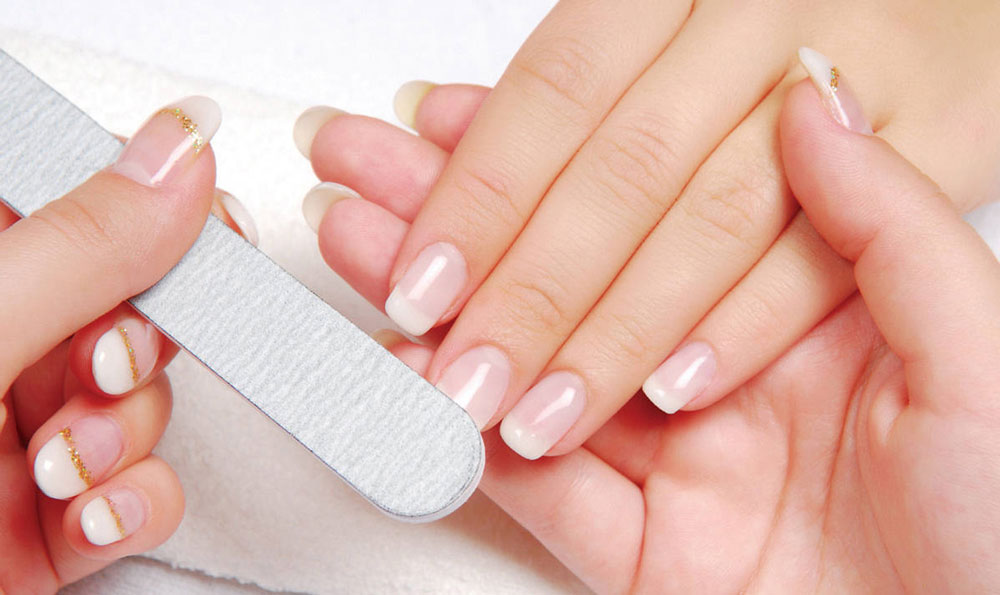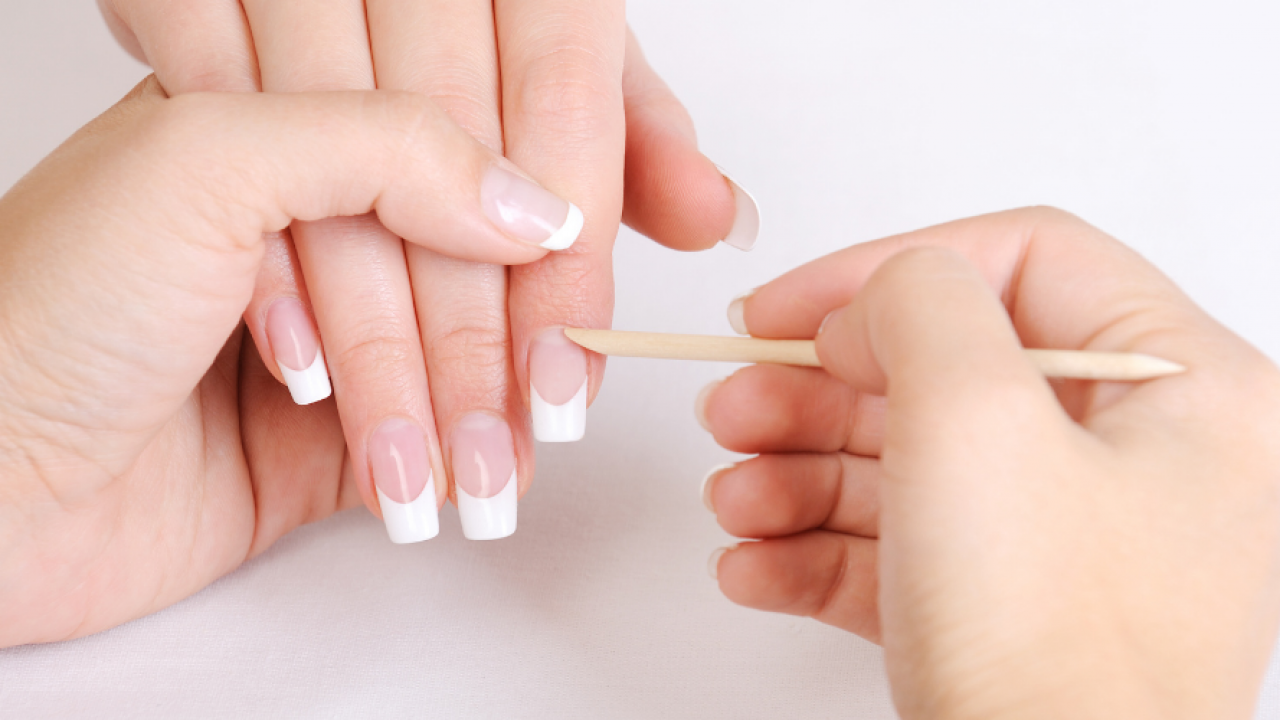When it comes to keeping our hands looking and feeling as good as possible, cuticle care can’t be overlooked. And, as well as keeping our hands healthy, caring for our cuticles properly also goes a long way in keeping our manicures looking salon-fresh and lasting as long as possible.
Want the total low-down on cuticle care? Here at Naio Nails, we’ve made a complete guide with all you need to know about your cuticles, including how to use a cuticle pusher safely and how to keep your cuticles in top condition.
What Is A Cuticle?
First thing’s first; what is a cuticle exactly?
A cuticle is the layer of fine skin at the bottom of your nail plate. Many people confuse the cuticle with the eponychium, which is the band of living skin at the bottom of your nails, but cuticles are in fact the very thin layers of dead skin that stick to your nail plate, just above the nail fold.
Gold marble-look wedding nails

Or add gorgeous gold accents to your look with this beautiful wedding nail art. With golden tips and a marble-inspired base, this look combines opulence with elegance and looks stunning offset against white. You can use gold gel polish for this look or gold foils and nail foil glue.
Cuticles are there to protect your nail from bacteria as it grows from your nail matrix, and for this reason, it’s important to keep your cuticles in tip-top shape in order for your nails to grow healthily and prevent infection.
How To Push Back Cuticles
So we know why we push back cuticles, but the most important is how we do it. When it comes to how to push back cuticles, it’s important not to cause any damage to the nail or cuticles themselves. Learning how to use a cuticle pusher is easy once you’ve got the right technique. Our four steps for pushing back cuticles are as follows:
1. First, remove any nail polish or nail extensions you may have on your nails.
2. Next, apply a few drops of cuticle oil and massage it into the cuticles and surrounding skin for a few minutes to help soften and moisturise.
3. Next, use the rounded sides of your cuticle pusher to lightly but firmly press your cuticle towards your proximal nail fold (the skin at the bottom of your nail).
4. Finally, if necessary, use a cuticle clipper to very carefully remove the excess dead skin. Cuticle clippers can also be used to cut off any hangnails (those jagged pieces of skin that sometimes protrude from the sides of your nail).
Note: Be very careful only to clip away dead cuticle skin and the skin still attached to your finger, and never cut your eponychium or nail fold! You should also never remove the cuticle entirely, as this can leave your nail open to infection.
There are three types of cuticle pushers: wood, stone and steel. An orangewood stick is all you need if your cuticles are soft, stone is perfect for harder cuticles and will exfoliate while they’re at it, whereas steel cuticle pushers work well on harder and tougher cuticles.
How To Use Cuticle Removers

As an optional step, you can also add a liquid cuticle remover over pushing back your cuticles. Cuticle removers work by exfoliating and buffing away cuticles still attached to the nail plate, and they can make the process of pushing back your cuticles easier. A cuticle remover is not always necessary, but if you do wish to use one, here’s how:
1. Apply the cuticle remover into your cuticles.
2. Allow the cuticle remover to sink in for about 30 seconds (this may vary by product).
3. Push your cuticles back using your implement of choice.
4. Wipe away any excess product or dead cuticle skin.
5. Apply cuticle oil.
Everyday Cuticle Care
As well as knowing how to push back cuticles in preparation for manicures, it’s also important to know how to keep our cuticles soft and well cared for. Dry, flaky skin around our nails does nothing for the appearance of a new manicure and can also lead to infection if not cared for properly. Our top tips for cuticle care are as follows:
• Use cuticle oil
If your cuticles or surrounding skin are prone to becoming hard and splitting easily, cuticle oil works wonders. Lots of factors such as harsh chemicals and daily wear and tear can mean our fingers and nails are prone to damage, but applying a small amount of cuticle oil every now again will give your nails some much-needed TLC! l
When applying cuticle oil, simply massage it thoroughly into your cuticles, nail bed and surrounding skin. If you get into the habit of applying it before bed or as part of your manicure routine, your cuticles and nails will stay looking their best.
Top tip: Cuticle oil can also be applied after a manicure to make your nails look extra glossy.
• Stop picking
If you’re a habitual cuticle picker or biter, you’re causing your cuticles and surrounding skin unnecessary damage! If you have a pesky hangnail, carefully snip it off with cuticle clippers, rather than dragging the skin down further and causing more (often painful!) damage.
• Give your nails a break
If you’ve tried the above and your cuticles are still dry and torn, try reducing the number of manicures you have, as there are often a lot of harsh chemicals and dehydration involved in the process of gels and acrylics. Additionally, try using an acetone-free nail polish solution if you can.
Infected Cuticles

If your cuticles are perpetually sore and cracked, you need to keep an eye out for infection. If you have trauma to your cuticles or surrounding skin (due to picking, biting, cutting your cuticles or pushing them down too far), it can cause a bacterial infection called paronychia.
• Redness of the surrounding skin
• Tender skin that’s sore to touch
• Changes in your nail shape, their colour, or their texture
• Pus-filled blisters
• Nail detachment
If you do notice any of these changes to your cuticle or surrounding tissue, be sure to make an appointment with your doctor.
And there you have our top tips for essential cuticle care. These are the basics steps of cuticle care that everyone should be following in order to keep their nails and cuticles in the best condition and subsequently looking their best!


 24-4-2021
24-4-2021
 24-05-2021
24-05-2021



